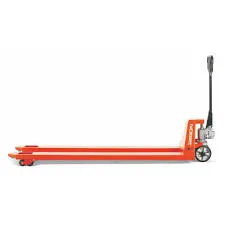


The Importance of Anti-Fall Protection Ensuring Safety in Hazardous Work Environments
In various industries, particularly construction, manufacturing, and maintenance, the risk of falls is a prevalent concern. According to the Occupational Safety and Health Administration (OSHA), falls are the leading cause of fatalities in the construction sector. This highlights the paramount importance of implementing robust anti-fall protection measures to ensure the safety of workers and minimize the potential for accidents.
Understanding Fall Hazards
Fall hazards can be found in numerous work environments. Workers may be exposed to various conditions, including unprotected edges, scaffolding, ladders, and rooftop work. The nature of these environments necessitates a comprehensive understanding of the risks involved. Identifying potential fall hazards is the first step in establishing effective safety protocols. Employers must conduct thorough inspections and assessments of work sites to pinpoint areas where falls could occur, thus enabling them to implement appropriate safety measures.
Types of Anti-Fall Protection Systems
Anti-fall protection systems can be broadly categorized into three types personal fall arrest systems (PFAS), guardrail systems, and safety nets
.1. Personal Fall Arrest Systems (PFAS) PFAS is one of the most widely used forms of fall protection. It typically consists of a full-body harness, lanyards, and an anchorage point. When properly designed and utilized, PFAS can effectively arrest a fall before a worker hits the ground. However, training is essential, as improper use can lead to injuries during a fall.
2. Guardrail Systems Guardrails are critical in preventing falls from elevated work surfaces. They should be used in areas such as scaffolding and around openings where workers are at risk of falling. Guardrails must meet specific height and strength criteria as outlined by safety regulations to be effective.

3. Safety Nets Safety nets provide a secondary means of fall protection. They are designed to catch workers if they fall, minimizing injury risk. Nets must be correctly placed, so they are positioned beneath potential fall zones, and they must be maintained to ensure their integrity.
Training and Education
While implementing anti-fall protection systems is vital, it’s equally important to focus on worker training and education. Employees should receive comprehensive training on the specific fall hazards they might encounter, the proper use of fall protection systems, and emergency procedures in case of a fall. Regular refresher courses can help maintain awareness and reinforce safety practices.
Furthermore, all supervisors and safety personnel should be trained to identify potential hazards and ensure compliance with safety regulations. A culture of safety within the workplace fosters an environment where employees feel empowered to prioritize their safety and report hazards without fear of repercussion.
Regulatory Compliance
Adhering to safety regulations is critical in minimizing workplace falls. OSHA has set forth standards regarding fall protection in various industries, mandating employers to have anti-fall measures in place. Regular inspections and audits help ensure that companies comply with these regulations. Non-compliance can result in significant penalties and, more importantly, jeopardize worker safety.
Conclusion
Investing in anti-fall protection is not just a regulatory obligation; it is a moral responsibility. By prioritizing the safety of workers through effective fall protection strategies, companies can significantly reduce the risk of accidents and create a safer work environment. Through a combination of proper system implementation, employee training, and adherence to regulations, organizations will not only comply with legal standards but also demonstrate a commitment to the well-being of their workforce. As the saying goes, Safety never takes a holiday—a principle that all industries must embrace to protect their most valuable assets their employees.



